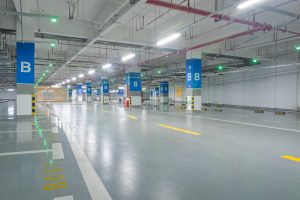Sodium Cyanide Found at Tianjin Explosion Site

 More than a week after the August 12 explosions in Tianjin which killed over 100 people and injured some 700 more, officials have announced that a high quantity of dangerous chemicals in shipping containers at Tianjin’s port are to blame for the blasts.
More than a week after the August 12 explosions in Tianjin which killed over 100 people and injured some 700 more, officials have announced that a high quantity of dangerous chemicals in shipping containers at Tianjin’s port are to blame for the blasts.
Water tests have shown that sodium cyanide, which is extremely toxic to humans, has been detected in eight spots around the explosion site, said Ministry of Environmental Protection official Tian Weiyong. At one spot, the chemical level was 356 times more than the safety limit.
Officials say that the polluted water has been contained into a warning zone near the site, and city authorities assure that air and water quality outside of this zone is normal. Many citizens are not convinced, however, and many are concerned about long-term environmental and health issues.
“Cyanide pollution is severe inside the warning zone. Outside the zone overall, the amount of cyanide detected is at normal range,” Tian said. No information has been relayed yet about the danger posed by the chemicals on site.
The warehouse where the explosions occurred was a storage site for more than 700 tons of dangerous chemicals. The blasts killed 114 people, and around 65 are still missing. Over 17,000 homes were damaged, 170 companies affected, and 3,000 cars ruined. Many people affected remain in makeshift shelters in nearby schools and apartment complexes.
While progress has been made, only about 20% of sodium cyanide has been moved so far, according to Tianjin Vice Mayor He Shushan. Officials also said that polluted water will be contained until levels return to normal.
Though China is working hard to clean up the mess made by the blasts, a United Nations expert has criticized the country’s handling of the disaster. Baskut Tuncak, who works for the U.N. as a special rapporteur on human rights and hazardous substances and waste, said that this tragedy could have been prevented or at least lessened if there was a better flow of information. He called on the Chinese government to be transparent in its investigation.
“The lack of information when needed — information that could have mitigated or perhaps even prevented this disaster — is truly tragic,” Tuncak said in a statement. “Moreover, the reported restrictions on public access to health and safety information and freedom of the press in the aftermath are deeply disturbing, particularly to the extent it risks increasing the number of victims of this disaster.”
This statement came after China’s decision to form a committee that would “give a responsible answer” on causes and punishment regarding this tragedy.
Before the blasts, Tianjin was a little-known port town in northern China. With 95% of the world’s cargo moving by ship, and many products coming from or passing through China on their global trek, Tianjin was an important port, but not known on the global scale it is following the explosion. It is still too early to tell how the town will recover.
Keywords:
2015 8 1, 8 12 gas station, 18 china 2015, are cyanide pills legal, cause of tianjin explosion, china chemical plant explosion 2017, china petrol explosion, chinese dock, cnn china explosion, difference between sodium cyanide and potassium cyanide, explosion at china chemical plant, explosion at tianjin china, explosion china factory, explosion china port, explosion in china 2017, explosion in tianjin china 2017, explosión de tianjín china, how is sodium cyanide made, how many people died in tianjin, huge chemical plant explosion, is cyanide dangerous.







